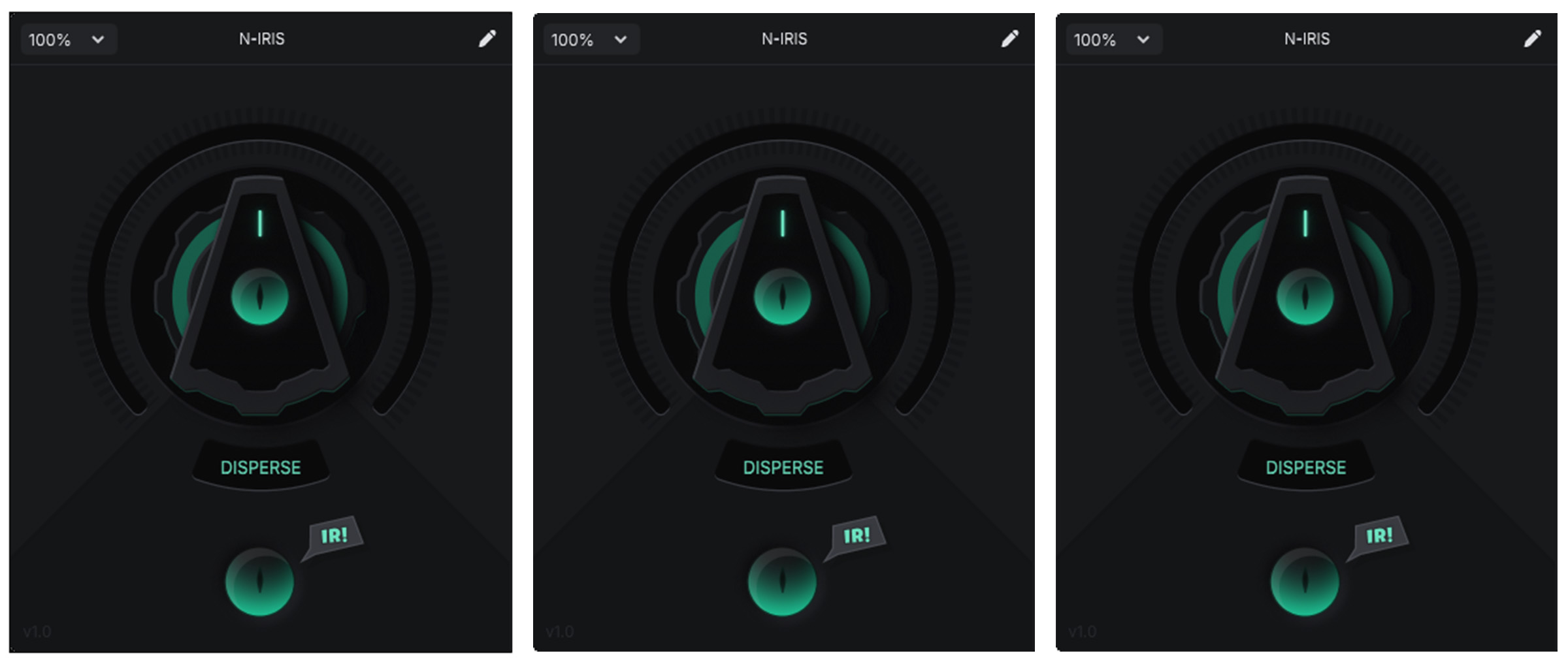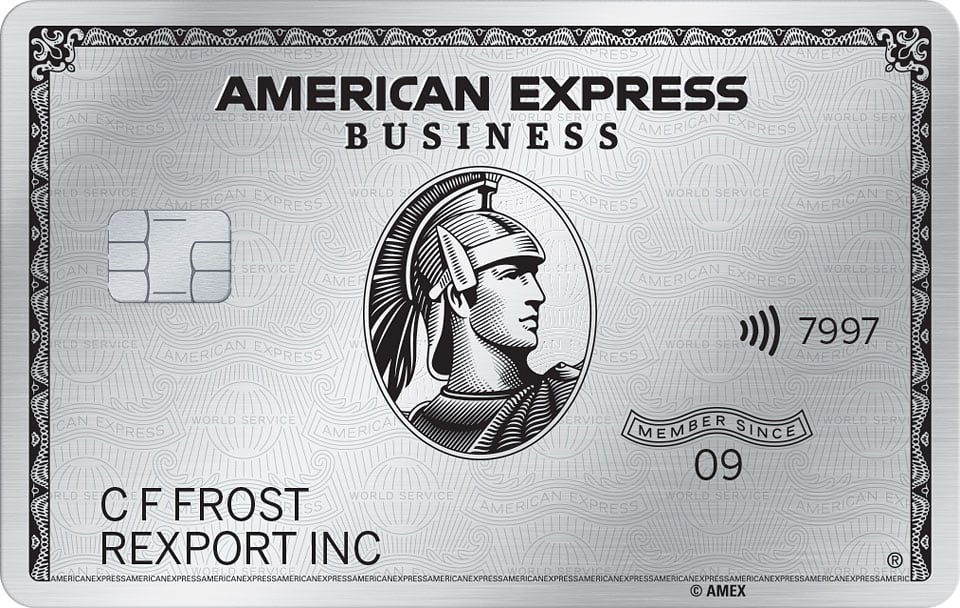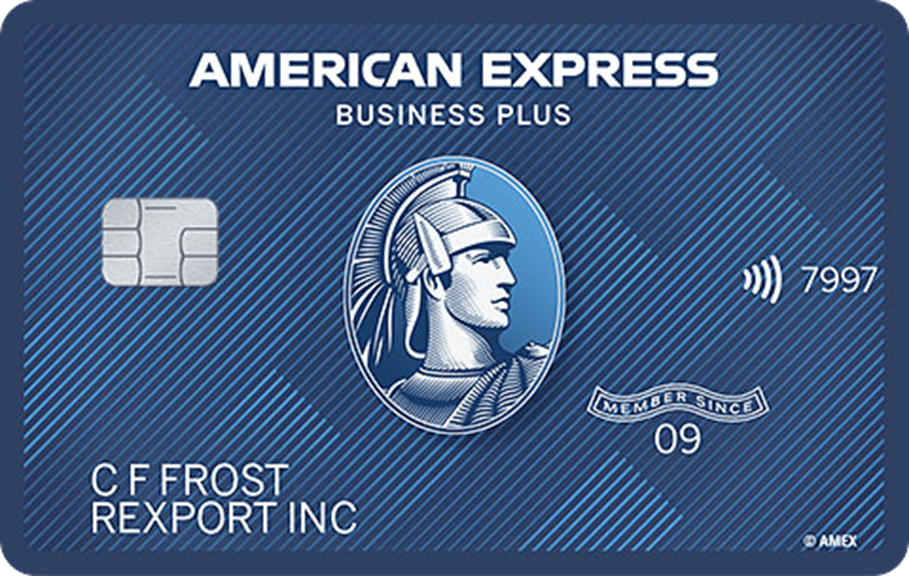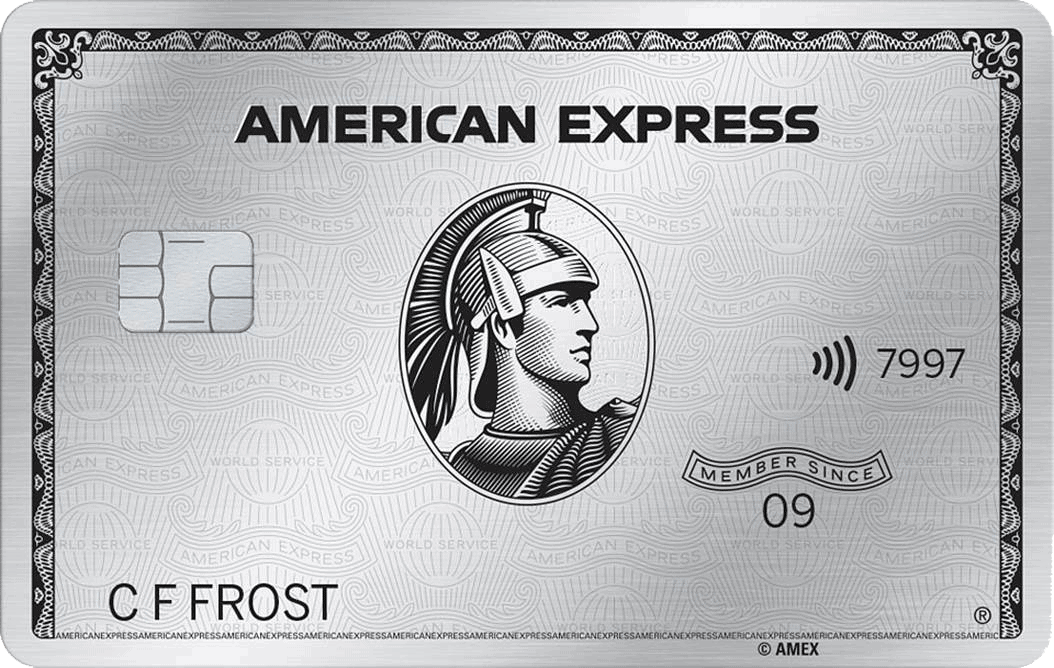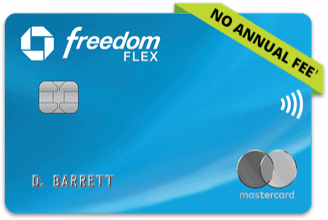Everything You Need to Know About Downgrading a High Annual Fee Card
All information about the American Express® Green Card and the Hilton Honors American Express Aspire Card has been collected independently by MileValue. Given generous welcome bonuses and valuable benefits associated with premium credit cards, these cards have become increasingly popular with points and miles enthusiasts. It’s not unusual in our community for an individual or household to have credit cards with annual fees totaling over $1,000 (and sometimes significantly more). That’s not bad if you have the disposable income and realize more benefits from your credit cards than the annual fees. The post Everything You Need to Know About Downgrading a High Annual Fee Card appeared first on MileValue.
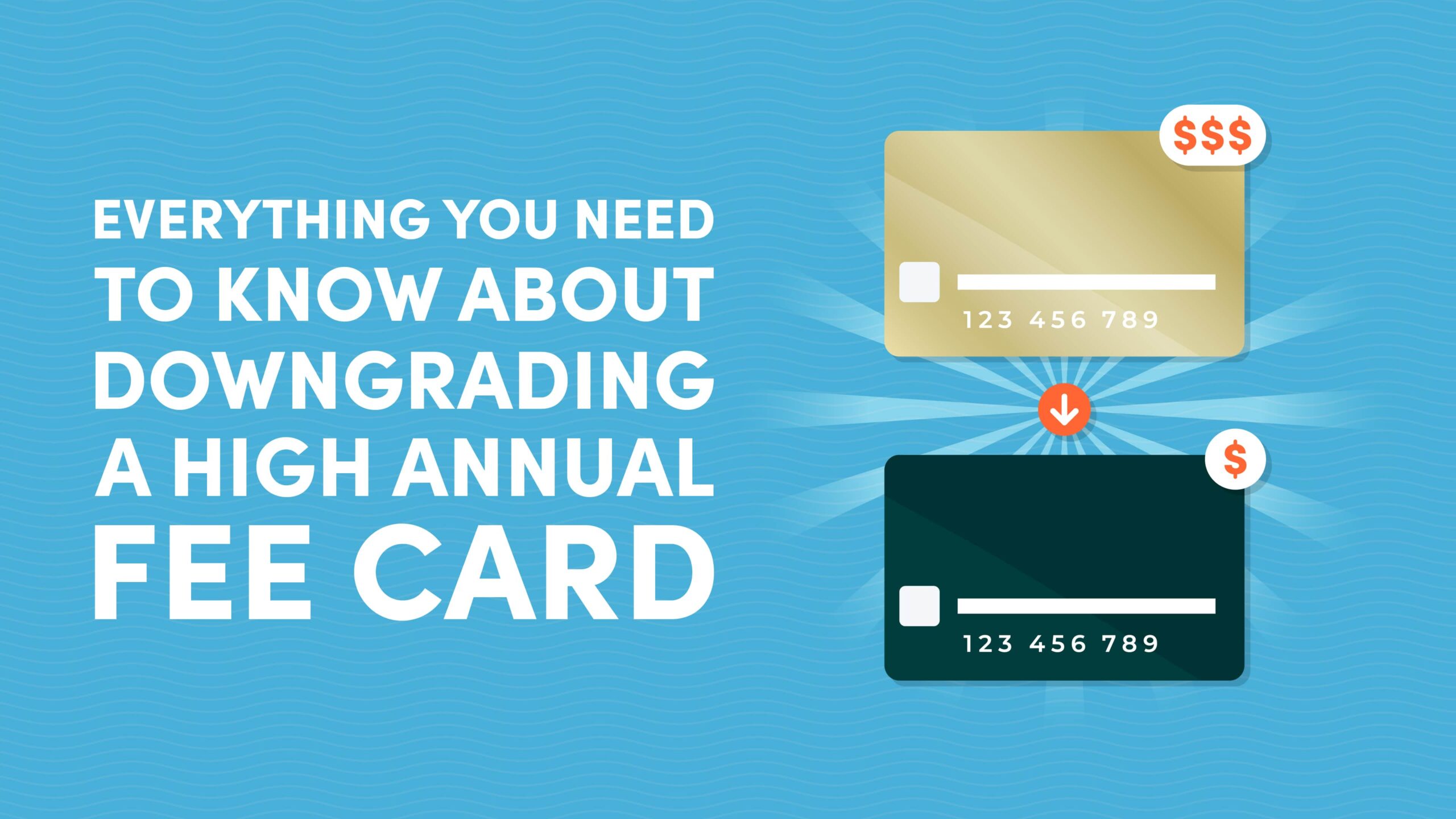
All information about the American Express® Green Card and the Hilton Honors American Express Aspire Card has been collected independently by MileValue.
Given generous welcome bonuses and valuable benefits associated with premium credit cards, these cards have become increasingly popular with points and miles enthusiasts.
It’s not unusual in our community for an individual or household to have credit cards with annual fees totaling over $1,000 (and sometimes significantly more). That’s not bad if you have the disposable income and realize more benefits from your credit cards than the annual fees. On the other hand, it’s important to consider whether you’re paying high annual fees for cards that don’t provide sufficient benefits.
It seems obvious that credit cards with annual fees should have stronger benefits than those without annual fees, and cards with higher annual fees should have more benefits than cards with lower annual fees. Nevertheless, benefits of a given card don’t have the same value for all cardholders, so it’s important to assess value relative to your situation rather than rely solely on generic assessments of a card.

Premium Credit Cards
Rewards credit cards have highly variable annual fees. When we discuss “high” annual fees, we’re focusing on premium credit cards with fees starting at around $400 per year.
Cards with annual fees at this level may offer benefits like travel or dining credits, complimentary airport lounge access, reimbursement of fees for trusted traveler program enrollment, free hotel nights, outright elite status or a boost toward status, complimentary subscription services and more.
The primary players in the rewards space have premium credit cards, and many issuers have premium credit cards in multiple card groups, also called families.
For example, American Express has premium cards that earn its own flexible rewards, Membership Rewards points. Amex also issues co-branded premium cards with airline and hotel partners, including Delta Air Lines, Hilton and Marriott. Similarly, Capital One, Chase and Citi have premium cards that earn flexible rewards, and Chase and Citi issue co-branded premium cards with partner airline and hotel loyalty programs.
While welcome bonuses and perks make premium cards enticing, either card benefits or your situation may change over time. While you can cancel credit cards to eliminate high annual fees, that’s not always the best path, so you should consider switching to a card with a lower annual fee instead of cancelling it.
Product Change Basics and Downgrade Considerations
Product changing is the term that many issuers use to refer to converting or switching one credit card to another. A product change can involve upgrading to a higher annual fee card or downgrading to a lower annual fee card.
Reasons to Downgrade
Let’s discuss some situations in which it may make sense to product change your card to a lower annual fee card.
Save Money by Reducing or Eliminating Annual Fees
Most of us have limits with how much money we can spend on credit card annual fees. Even though many credit cards provide benefits that can be worth substantially more than the annual fee, that fee is still an out-of-pocket expense that should be considered in overall budgeting or spending plans.
Preserve Points and Miles
For cards that earn flexible currency, many issuers require you to have an active credit card to maintain your rewards. With most of the major programs—including American Express Membership Rewards, Capital One Rewards, Chase Ultimate Rewards and Citi ThankYou® Rewards—if you’re not planning to keep a card with a high annual fee, downgrading the card instead of closing it often preserves your points and miles.
The concern about losing points and miles when closing a credit card doesn’t apply to cards that earn airline or hotel points and miles, because these rewards are deposited directly into your loyalty program account. Program-specific points and miles generally are yours to keep if you close a credit card, unless the card issuer or loyalty program flags your account for activity that they don’t like.
Maintain a Good Relationship with the Issuer
Related to activities that banks don’t like, let’s talk about churning. The term refers to the process of regularly opening new credit cards for lucrative welcome bonuses and not using the card and canceling it within a short time after completing the spending requirement to earn the bonus.
There rarely is a good reason to close a card before its first anniversary annual fee is due, but if at the one-year period you decide not to renew the high annual fee card, downgrading to a lower annual fee card may be helpful in establishing you as a valuable customer instead of a churner.
Maintain or Build Your Credit Score
Credit history and utilization are important factors in determining your credit score, and closing accounts can have some negative consequences.
- Reduced average account age: Closing one or more of your oldest credit cards—especially for individuals with a shorter credit history and a limited number of credit cards—can negatively impact a statistic that is considered in credit scores, the average age of accounts.
- Increased utilization: Utilization is the percentage of your credit limit that’s being used. If your credit limit is $10,000, and your balance is $2,500, that’s 25% utilization. Banks consider high utilization to be a credit risk. Utilization can be measured for a specific credit card or across multiple accounts. Closing an account with a high credit limit increases your utilization. For example, if an individual has five credit cards with a combined credit limit of $50,000 and usually spends about $7,500 per month, the utilization is 15%, but if a credit card with a $25,000 credit limit is closed, that makes the utilization 30% (7,500 / 25,000).
Switch to Cards Better Aligned with Your Priorities and Desired Benefits
Over time, several things can change that make a credit card less beneficial to a particular individual.
- Changes in priorities: One factor is life or preference changes. For example, you may have benefitted from your co-branded airline or hotel credit card in the past, but if your travel patterns change, benefits with a specific loyalty program may be less valuable to you.
- Benefit changes: Credit card benefits and/or partner loyalty programs themselves may have changed since you opened a credit card, and the revised benefits no longer provide as much value.
- Other credit cards: New credit cards you obtained may make an existing credit card less valuable than it was before. For example, if you previously used one card for dining expenses because it earned 3X points per dollar, that card might be less valuable if you obtain a new card with a higher earning rate for dining. Another way that benefits can become less valuable is if you hold multiple credit cards that offer the same benefit and don’t get additional value from duplicate benefits.
Limitations and Cautions for Downgrades
Product change options are limited by issuers’ rules for each card. Although the situation varies, some common limitations are:
- Product changes often need to be within a card family that earns the same type of rewards. For example, you can’t downgrade a Chase credit card that earns Marriott Bonvoy points to a card that earns Ultimate Rewards points, airline miles or different hotel points.
- Product changes need to be from one business card to another business card or one consumer card to another consumer card. You can’t change from a business card to a consumer card or vice versa.
- For issuers other than American Express, product changes usually are from one Mastercard to another Mastercard or one Visa card to another Visa card. If switching from a Mastercard to a Visa or vice versa, the card number would change.
- For American Express cards, you can’t change a card without a preset limit, such as The Business Platinum Card® from American Express, to a credit card, such as The Blue Business® Plus Credit Card from American Express, or vice versa.
- For Capital One credit cards, product change options vary by individual and card. If you have a card that you’re interested in changing, check online or contact Capital One to find out if you can change your card at all and to which card(s).
When considering a product change to a lower or $0 annual fee card, you need to think about the implications for future credit card applications and welcome bonuses. Although there are exceptions, typically you’re not eligible for a new card welcome bonus if you obtain a credit card via product change instead of applying for it as a new card.
The Business Platinum Card® from American Express
Limited Time Travel Offer: Earn 150,000 Membership Rewards® points after you spend $20,000 on eligible purchases on your Business Platinum Card® within the first 3 months of Card Membership. Plus, earn a $500 statement credit after you spend $2,500 on qualifying flights booked directly with airlines or through American Express Travel with your Business Platinum Card® within the first 3 months of Card Membership. You can earn one or both of these offers. Offer ends 6/30/25.
The Blue Business® Plus Credit Card from American Express
Earn 15,000 Membership Rewards® points after you spend $3,000 in eligible purchases on the Card within your first 3 months of Card Membership.
There sometimes are bank or card-specific rules that prevent you from obtaining other cards and/or earning a welcome bonus on other cards if you hold a particular card. For example:
- Holding multiple cards within a family: Chase’s family rules prevent an individual from holding both the Chase Sapphire Reserve® and the Chase Sapphire Preferred® Card at once, unless the individual held both cards before this rule was implemented.
- Being excluded from welcome bonuses: American Express has both lifetime restrictions on earning welcome bonuses for a specific credit card and family language that prevents individuals from earning a welcome bonus on one card if you have another card in the same family. Rules applicable to specific cards vary, but it’s important to keep this in mind when considering product changes.

Chase Sapphire Reserve®
Earn 60,000 bonus points after you spend $5,000 on purchases in the first 3 months from account opening.

Chase Sapphire Preferred® Card
100,000 bonus points after you spend $5,000 on purchases in the first 3 months from account opening.
Card Evaluation Process
Especially for individuals who hold multiple credit cards, we recommend taking a systematic approach to assessing your cards. This essentially involves doing a cost/benefit analysis of each card. Costs include out-of-pocket costs, such as the annual fee. There also may be some opportunity costs or downsides of continuing to hold this card. For example, holding a particular card may prevent you from getting another desired card.
For benefits, you need to evaluate card features and perks. Some of these are quantifiable, but others are more qualitative. Even perks that have a known cost (for example, reimbursement for the cost of applying for a trusted traveler program or provision of free checked bags on a specific airline) have more value to some individuals than others.
Even outright statement credits can have different value to different individuals. Because of the restrictions and limited use, many points and miles enthusiasts value particular credits at far less than the stated value, maybe even $0. For example, The Platinum Card® from American Express (see rates and fees) offers several credits for specific memberships or purchases that some cardholders wouldn’t use at all.
Earn 80,000 Membership Rewards® Points after you spend $8,000 on eligible purchases on your new Card in your first 6 months of Card Membership.
Because the value of specific benefits and perks varies by individual, we recommend going through the card benefits and assigning a value based on your own situation. If the total benefits exceed the total costs, the card is worth keeping. Otherwise, you should consider downgrading or closing the card.
To demonstrate the evaluation, we’ll look at two of the most popular premium credit cards that earn flexible rewards.

Evaluating overlapping benefits
The process becomes more complicated when an individual has cards that offer the same or similar benefits. Priority Pass Select lounge access and trusted traveler program enrollment fee reimbursement are common benefits for the two cards discussed below and others.
In most cases, a benefit like Priority Pass doesn’t provide additional value if you have it with multiple cards. If you’re planning to keep only one premium card, you can split the value of the common benefits when starting the assessment, and once you’ve decided which card to keep, move the full value to the card you’re keeping and consider the value as $0 for the other card.
On the other hand, multiple trusted traveler program enrollment fee reimbursements from two or more credit cards may provide additional value if your friends and family members enroll as well.
Example 1: Chase Sapphire Reserve®
The Sapphire Reserve Card’s annual fee is $550, so that’s the cost of keeping the card every year.
There’s another consideration with Chase credit card annual fees. If you want to be able to transfer Ultimate Rewards points to partners, a cardholder or a household member must hold a card that earns Ultimate Rewards points and has an annual fee. Current options with lower fees than the Sapphire Reserve Card are the Sapphire Preferred Card and the Chase Ink Business Preferred® Credit Card. If you need to replace a $550 annual fee card with a $95 annual fee card, the effective cost of the Chase Sapphire Reserve is $455.
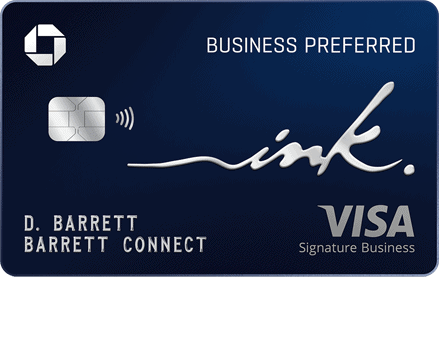
Chase Ink Business Preferred® Credit Card
90,000 bonus points after you spend $8,000 spend in 3 months.
Some key benefits to evaluate are:
- $300 annual statement credit for travel purchases: For many cardholders, this benefit is worth $300 or nearly that amount. Chase’s definition of travel is broader than many other credit cards, so if you aren’t fully using this credit, the Sapphire Reserve may not be the best card for you.
- Earning rates of 5X for airfare / 10X for hotels and rental cars booked through Chase Travel℠ and 3X points for dining and general travel spending: This benefit is harder to evaluate because it depends on the amount spent on applicable travel and the difference between the Sapphire Reserve earning rate and the card you’d use as an alternative.
- 1.5 cents per point redemption rate through Chase Travel℠: This benefit has widely divergent value because some individuals rarely redeem points through Chase Travel℠ and others use this method frequently. The way to evaluate this is by estimating the amount of travel booked through this channel and multiplying by the difference of 1.5 and the redemption rate with another card. If the other card is the Sapphire Preferred Card or one of the Chase Freedom cards, you’re foregoing 0.25 cents or 0.5 cents per dollar by using these cards to pay through Chase Travel℠ instead of using the Sapphire Reserve.
- Lounge access: The Sapphire Reserve provides a Priority Pass Select membership that covers entry for the cardholder and up to two guests. Cardholders also have unlimited access to the growing collection of Sapphire Lounge by The Club locations. Again, the value of this benefit varies based on frequency of travel, specific airports visited and other lounge memberships an individual has.
- Credit for Global Entry, TSA PreCheck or Nexus enrollment fee every four years: The value of this benefit varies depending on other cards you hold that provide the same benefit and how many friends and family members you’re enrolling in one of these programs.
- Other partnership benefits: Some other benefits are limited-time offers or likely are valuable to a smaller group of cardholders, for examples, benefits at The Edit℠, an accommodations collection.
Let’s assess the Sapphire Reserve value for a hypothetical cardholder who values the benefits as follows:
- $300 for the annual travel credit because this individual spends more than this amount in paid travel expenses and prefers using the Sapphire Reserve for its travel protection benefits.
- $75 for the value of points earned through spending in bonus categories over an alternative card that earns 2X points per dollar, calculated as estimated spending times the point differential (for example, 2X to 3X). For this individual, most travel spending is direct with providers at 3X points, and points are worth 1.5 cents each.
- $5 for the value of points redeemed through Chase Travel℠ since the individual doesn’t use this redemption option often.
- $100 for lounge access for five lounge visits, valued at $20 each.
- About $30 per year for trusted traveler program enrollment, based on the reimbursement being available every four years.
- $0 for other benefits since the individual doesn’t use these companies.
That’s a total of $510 in value, which is less than the annual fee for the card but more than the effective annual fee if this individual decides to replace the Sapphire Reserve with a lower annual fee Chase card that earns Ultimate Rewards points, as discussed above.

Chase Sapphire Reserve®
Earn 60,000 bonus points after you spend $5,000 on purchases in the first 3 months from account opening.
Example 2: The Platinum Card® from American Express
This card has a $695 annual fee (see rates and fees), which is the cost of retaining the card. If you decide to downgrade this card, the least expensive option is the American Express® Green Card with an annual fee of $150.
American Express Membership Rewards points are associated with an individual, so depending on what other American Express cards you or a household member hold, you may not need to retain a card without a preset limit to preserve your Membership Rewards points.
The Platinum Card® from American Express has a long list of benefits, so our example will focus on some of the key benefits that are easier to quantify and are relevant to more cardholders.
- $200 airline fee credit: American Express automatically reimburses up to $200 per calendar year for airline incidental fees for your selected airline only.
- $200 prepaid hotel credit per year: This credit applies to prepaid bookings through Fine Hotels & Resorts or The Hotel Collection. Hotel Collection bookings require a two-night minimum stay. In addition, you’ll get some bonus perks when you book these properties through Amex Travel.
- $100 Saks Fifth Avenue credit: This credit is two semi-annual $50 credits (for January to June and July to December periods) for Saks Fifth Avenue purchases.
- Free Walmart+ subscription: This is a statement credit for the full cost (up to a $12.95 per month plus applicable taxes) of the subscription.
- Monthly credits: The Platinum Card offers credits that must be used each month, including up to $20 per month credit for selected digital entertainment channels and up to $15 per month (plus $20 extra in December) credit for Uber and Uber Eats.
- Increased earning of 5X points per dollar spent in bonus categories: Categories include flights (up to $500,000 per year) booked directly with airlines or through Amex Travel and prepaid hotels booked through Amex Travel.
- Airport lounge access: The American Express Global Lounge Collection® includes Centurion Lounges, Plaza Premium lounges, Escape Lounges, Priority Pass lounges, Delta Sky Clubs (when flying Delta) and select Lufthansa lounges (when flying with Lufthansa Group airlines). Most lounge access is for the cardholder and two guests with two notable exceptions. Centurion Lounge access is for the cardholder only, unless the cardholder meets hefty minimum spending requirements. Delta Sky Club access is for the card member and is limited to 10 visits per year.
- Global Entry or TSA PreCheck credit: Cardholders either get a statement credit to reimburse the Global Entry application fee every four years or a statement credit every 4.5 years to reimburse the five-year membership fee for TSA PreCheck.
- $199 annual CLEAR® Plus credit: Cardholders get up to this amount as the maximum annual reimbursement for CLEAR subscriptions.
- Elite status with select hotel and car rental programs: The American Express Platinum Card provides cardholders with status in several hotel and car rental programs. Cardholders can enroll for Hilton Honors Gold status and Marriott Bonvoy Gold Elite status. Cardholders also can receive elite status and other benefits with Avis, Hertz and National.
Earn 80,000 Membership Rewards® Points after you spend $8,000 on eligible purchases on your new Card in your first 6 months of Card Membership.
Let’s say that our hypothetical consumer holds the Capital One Venture X Rewards Credit Card and values Platinum Card benefits as follows:
- $100 for the airline fee credit because this individual splits air travel among airlines and doesn’t usually pay for checked baggage or seat selection.
- $150 for the prepaid hotel credit because this individual thinks that booking an eligible Fine Hotels & Resorts or The Hotel Collection property would be more expensive or less flexible compared to other hotel options.
- $300 combined for monthly credits for Uber and Uber Eats and digital entertainment subscriptions because the individual wouldn’t necessarily use the Uber credit every month and wouldn’t fully use the digital entertainment credits.
- $0 for other credits like Saks Fifth Avenue or Walmart+ because these don’t fit the individual’s shopping patterns.
- $50 for the value of points earned through spending in 5X bonus categories over an alternative card that earns 2X points per dollar. This individual would use the Amex Platinum Card to purchase flights but wouldn’t book prepaid hotels through Amex Travel.
- $40 for lounge access for two lounge visits—to allow access to specific lounges that aren’t part of the Venture X lounge network.
- About $30 per year for Global Entry enrollment, being available every four years. The individual already has this benefit through the Venture X Card but plans to enroll another family member. The individual wouldn’t pay for CLEAR Plus, so the value of that benefit is $0.
- $50 combined for hotel and car rental status: The individual doesn’t value car rental or Marriott Gold Elite status, so the $50 estimate is for Hilton Gold benefits (complimentary continental breakfast or food and beverage credit) for an occasional Hilton full-service property stay.
While the total benefits value of $720 slightly exceeds the Platinum Card’s annual fee, the difference is small, and the individual should consider whether benefit values are overestimated and if it makes sense to pay an upfront annual fee for potential future benefits.
Downgrade or Closure Process
If after evaluating your current credit card you decide to downgrade or close it, some best practices are provided below.
Research Options
It’s worth doing some initial research to see if there is a downgrade path for your card and to determine if the downgrade options are of interest. While ultimately the issuer determines what options are available, it’s useful to have some idea about what cards might be product change options and think about how they fit your needs.
Contact the Issuer
Contact the issuer’s customer service by phone or through online channels to find out what options are available to you.
Points and miles enthusiasts sometimes talk about retention calls, which are related to calling about product change options. Retention calls typically are made to determine if the issuer will provide a retention bonus, which could include a statement credit or bonus points or miles for keeping a card open. Like product change options, retention offers will be specific to each cardholder.
If you’re on the fence about keeping, downgrading or closing a card, you can ask about retention offers to keep your current card open and options for downgrading your card in a single contact.
Consider the following practices for contacting issuers about potential downgrades or cancelling a card:
- Make sure you don’t put yourself in a situation where an automated system cancels your credit card. Instead of saying “cancel card,” say something more complex and nuanced to ensure you get transferred to a human.
- Make sure that if you downgrade your card, the account age and history are based on the original card and there won’t be a credit inquiry or account number change. That’s the normal procedure, but there might be exceptions. As discussed above when changing from a Visa card to a Mastercard or vice versa, the account number changes. If your reason for downgrading a card instead of closing it is to maintain the age of the account or avoid credit inquiries, it’s important to verify that your account age and history are maintained.
- Make sure to note the details of a retention offer you accept and clarify whether you still need to pay the annual fee if you agree to a product change. Depending on the issuer and when you agree to a downgrade, you may have to pay the annual fee, and the issuer will provide a statement credit to your account. Also depending on timing, you may have to pay a prorated annual fee for the card you’re downgrading from and/or the first-year annual fee for the new card, if applicable.

Premium Cards with Potential Downgrade Options
Let’s take a look at some popular premium cards and possible downgrade paths.
This isn’t a comprehensive list of credit cards with downgrade options. We’re also not considering any consumer credit cards with annual fees under $375 to be premium cards. Card issuers sometimes have families of three or four cards with annual fees ranging from $0 to nearly $700. For this discussion, we’re focusing on downgrade options for the highest annual fee premium card within a card family.
Of course, there are situations where you might want to downgrade mid-range annual fee cards, and the same process discussed above can be used.
Flexible Rewards Credit Cards
American Express, Capital One, Chase and Citi each have premium cards that earn flexible currency that can be transferred to partners or used in other ways, but the Citi Prestige Card is no longer available for new applicants. Cards and potential downgrade options are listed by program.
- American Express Membership Rewards: The Platinum Card® from American Express (see rates and fees) doesn’t have an option to downgrade to a $0 annual fee card but can be downgraded to the American Express® Gold Card (see rates and fees) or the American Express® Green Card.
- Capital One Miles: Capital One Venture X Rewards Credit Card is the premium consumer card that earns Capital One Miles. All Capital One product change options are called “upgrades” and are customized to each account. To find out if and to which card(s) you can product change your Venture X, check “Offers and Upgrades” and then “Swap your card” in your account or contact customer service. Other cards that provide flexible rewards without a high annual fee include the Capital One Venture Credit Card and the Capital One VentureOne Credit Card.
- Chase Ultimate Rewards: The Chase Sapphire Reserve® premium card can be downgraded to a lower annual fee Chase Sapphire Preferred® Card or to multiple $0 annual fee cards, including the Chase Freedom Flex® and the Chase Freedom Unlimited®. When considering a downgrade option, you probably want to keep at least one Sapphire Reserve, the Sapphire Preferred or the Ink Business Preferred in your household, because this preserves the ability to transfer points to partners and earns a better rate for Chase Travel℠ redemptions.
- Citi ThankYou® Rewards: The premium Citi Prestige card hasn’t been available for applications for several years, but if you want to downgrade an old card, options include several cards that earn ThankYou® Points, such as the Citi Strata Premier℠ Card, the Citi Custom Cash® Card and the Citi Double Cash® Card.

Chase Sapphire Reserve®
Earn 60,000 bonus points after you spend $5,000 on purchases in the first 3 months from account opening.

Chase Sapphire Preferred® Card
100,000 bonus points after you spend $5,000 on purchases in the first 3 months from account opening.

Chase Freedom Unlimited®
Limited Time Intro Offer: Earn a $250 Bonus after you spend $500 on purchases in your first 3 months from account opening.
Airline and Hotel Credit Cards
Premium co-branded credit cards are discussed by loyalty program.
- American AAdvantage: While Barclays and Citi both issue American Airlines co-branded cards today, it has been announced that Citi will become the exclusive issuer beginning in 2026. Barclays also doesn’t have a premium American Airlines card. The premium Citi / AAdvantage® Executive World Elite Mastercard® can be downgraded to a lower or $0 annual fee American Airlines card.
- Delta SkyMiles: American Express issues Delta co-branded cards. The premium Delta SkyMiles® Reserve American Express Card can be downgraded to the Delta SkyMiles® Platinum American Express Card, the Delta SkyMiles® Gold American Express Card or the Delta SkyMiles® Blue American Express Card.
- Hilton Honors: American Express issues Hilton co-branded cards. The premium Hilton Honors American Express Aspire Card can be downgraded to the Hilton Honors American Express Surpass® Card or the Hilton Honors American Express Card. At the time of writing, American Express’ family language doesn’t apply to Hilton cards, so we recommend that you downgrade to a card you’ve already held to preserve the opportunity to earn a future welcome bonus on a card you’ve never held.
- Marriott Bonvoy: Both American Express and Chase issue Marriott co-branded cards, and rules about allowable combinations of cards that can be held by an individual and welcome bonus restrictions are complex. If you have a premium Marriott card, possible downgrade paths are:
- For American Express Marriott co-branded cards, the premium Marriott Bonvoy Brilliant® American Express® Card can be downgraded to the Marriott Bonvoy Bevy® American Express® Card.
- For Chase cards, the premium Chase Ritz-Carlton Visa Infinite isn’t available for new applicants, but if you have one, you may be able to downgrade it to the Chase Marriott Bonvoy Bountiful® Card, the Marriott Bonvoy Boundless® Credit Card or the Marriott Bonvoy Bold® Credit Card.
- United Mileage Plus: Chase issues United co-branded cards, and its premium The New United Club℠ Card can be downgraded to the The New United Quest℠ Card, the The New United℠ Explorer Card or the The New United Gateway℠ Card.

Marriott Bonvoy Boundless® Credit Card
Earn 3 Free Night Awards (each night valued up to 50,000 points) after spending $3,000 on eligible purchases within 3 months of account opening. Plus, earn 50,000 bonus points after spending $6,000 on eligible purchases within 6 months of account opening.

Marriott Bonvoy Bold® Credit Card
Earn 30,000 Bonus Points after you spend $1,000 on purchases in the first 3 months from account opening.
Business Credit Cards
Business credit cards often have smaller families and limited options for product changing cards. For example, Citi has three levels of consumer co-branded American Airlines credit cards but only has a single business credit card.
Two issuers with business versions of popular consumer premium cards that earn flexible rewards are:
- American Express: The Business Platinum Card® from American Express (see rates and fees) is the premium card, and similar to Platinum consumer cards, the Amex Business Platinum Card can be downgraded to the American Express® Business Gold Card or the Business Green Rewards Card.
- Capital One: The premium business card earning miles is the Capital One Venture X Business Card. As discussed for consumer cards, Capital One’s product change offers are customized, so checking your options online or with an agent is necessary.
Additionally, the co-branded Delta premium card for business owners is the Delta SkyMiles® Reserve Business American Express Card, which can be downgraded to the Delta SkyMiles® Platinum Business American Express Card or the Delta SkyMiles® Gold Business American Express Card.

American Express® Gold Card
Earn 60,000 Membership Rewards® Points after you spend $6,000 on eligible purchases on your new Card in your first 6 months of Card Membership.

Earn 100,000 Membership Rewards® points after you spend $15,000 on eligible purchases with the Business Gold Card within the first 3 months of Card Membership.
Capital One Venture X Business
For a limited time, earn up to 350,000 bonus miles
150,000 miles once you spend $30,000 in the first 3 months, and an additional 200,000 miles once you spend $200,000 in the first 6 months
Final Thoughts
Considering a product change for current credit cards with high annual fees should be part of an ongoing review process to ensure that the credit cards you hold meet your current needs. This entails analyzing your credit cards to ensure that they provide sufficient value to offset the annual fees, and if they don’t, taking actions to downgrade or close credit cards.
The post Everything You Need to Know About Downgrading a High Annual Fee Card appeared first on MileValue.




![Top Hat Studios Announces Two New Publishing Deals and a May 13 Launch for ‘Labyrinth of the Demon King’ [Trailer]](https://bloody-disgusting.com/wp-content/uploads/2025/04/labyrinth.jpg)





































































































































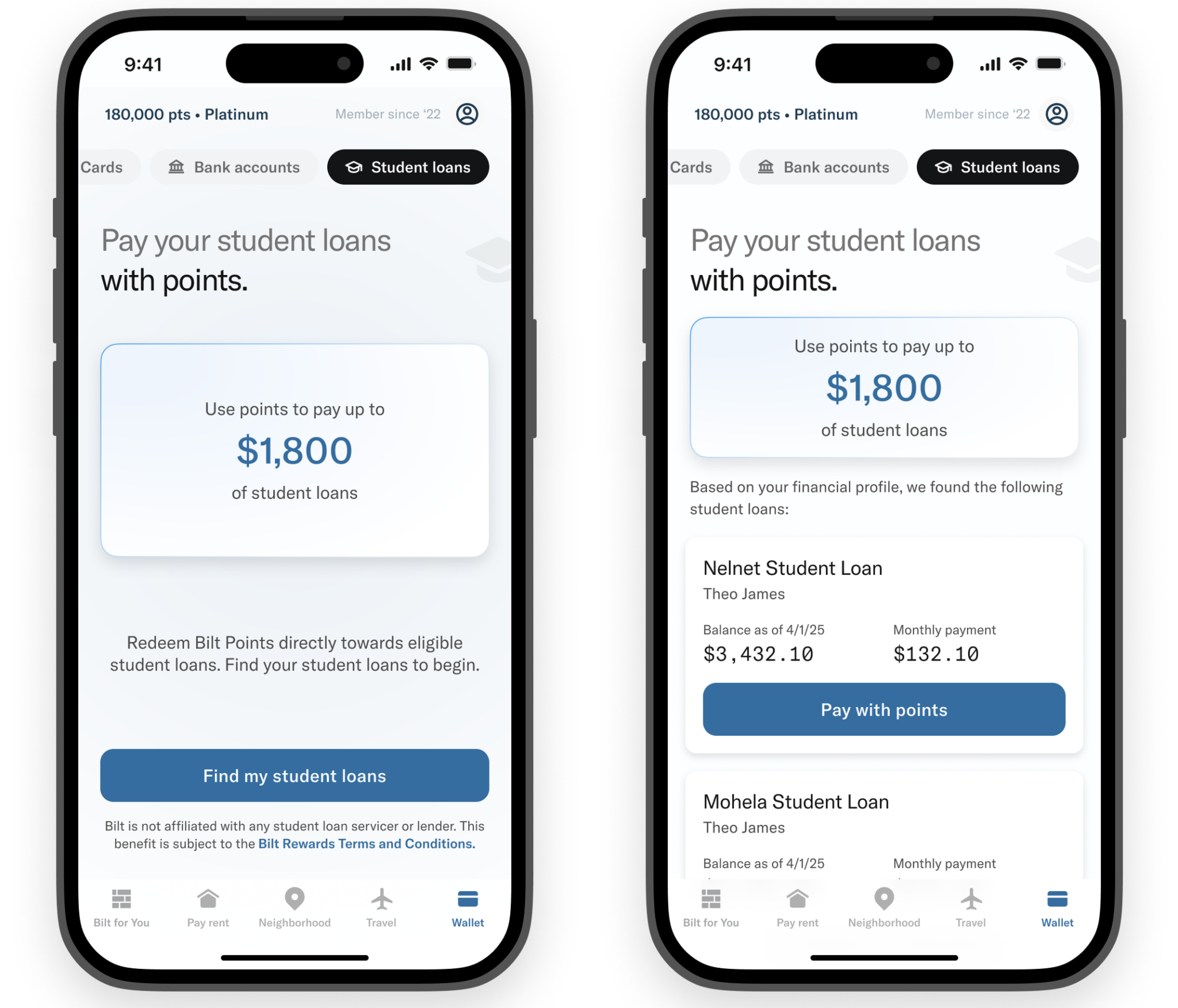





























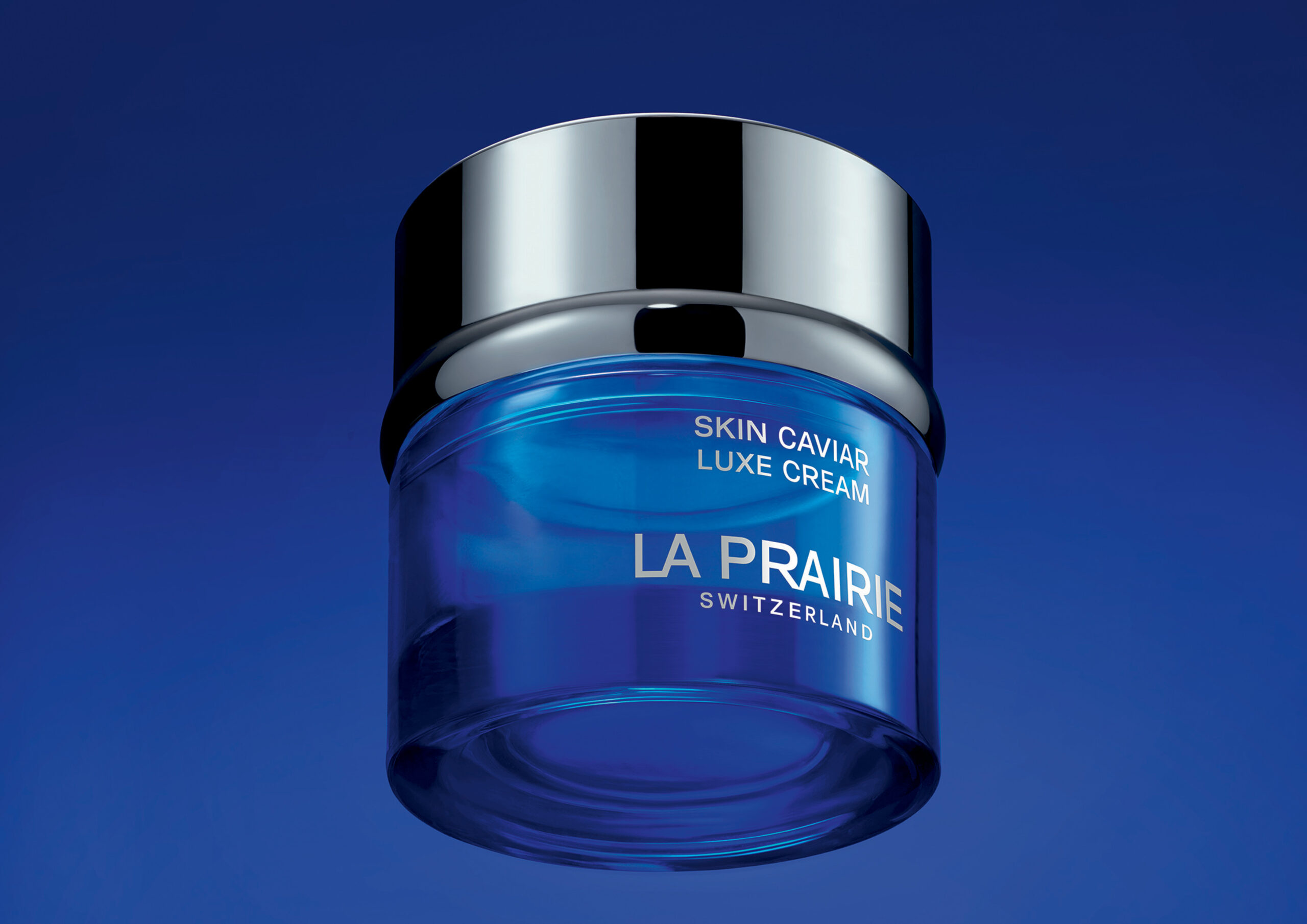



















































![Last Chance Before Southwest Ends Open Seating: 90s Legend Kato Kaelin’s Barf Bag Hack Scores Empty Middle Seat [Roundup]](https://viewfromthewing.com/wp-content/uploads/2025/04/kato-kaelin-southwest.jpg?#)

![Mouse Invades United Club at LaGuardia on the Eve of $1,400 Fee Hike [Roundup]](https://viewfromthewing.com/wp-content/uploads/2025/04/united-club-lga.jpg?#)




















-Classic-Nintendo-GameCube-games-are-coming-to-Nintendo-Switch-2!-00-00-13.png?width=1920&height=1920&fit=bounds&quality=70&format=jpg&auto=webp#)















































































































































![[Podcast] Unlocking Innovation: How Play & Creativity Drive Success with Melissa Dinwiddie](https://justcreative.com/wp-content/uploads/2025/04/melissa-dinwiddie-youtube.png)









































































